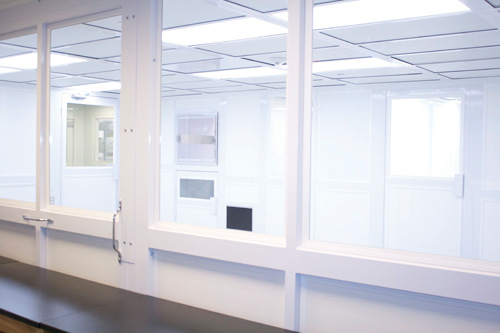Growing Acceptance of Real-Time Monitoring

Regulators Increasingly Embrace New Rapid Technologies for Viable Air Monitoring
When it comes to air monitoring, manufacturers have relied on gravitational sampling by settle plates—a weak methodology. The value of data generated by settle plates is highly questionable, considering that most positive plates are generated from false-positive results. But real-time monitoring might offer a solution, driven by recent regulatory developments.
For example, regulators are turning to ISO/EN norms as reference documents detailing methods for the determination of microbiological and particulate cleanliness of air, surfaces, etc. (1). With viable air monitoring, in particular, they are looking at the ISO 14698 standard (2). ISO 14698 states that “a sampling device shall be selected according to the area being monitored. The selection for a particular application shall take into consideration the following factors: expected concentration of the viable particles, ability to detect low levels of biocontamination and time and duration of sampling” (2).
This leads to a vital point: it is virtually impossible for pharmaceutical customers to validate viable air samples for biological or physical collection efficiency as required in ISO 14698. Only a few laboratories worldwide can provide the experimental design and know-how required for trial testing. Collection efficiency remains a critical measure that manufacturers of instruments should provide and demonstrate. This is where real-time solutions can help.
Rapid or alternative microbiological methods have been promoted for almost 20 years in the pharmaceutical industry. In 2003, the U.S. FDA guidance on process analytical technology (PAT) (3) and the pharmaceutical cGMPS for the 21st century gave industry a new drive. The concept of PAT implies the need for collection of process data in real-time, targeting a realtime release of drug products. The FDA guidance, updated in 2015, recommends “building quality into products” through science-based facility, equipment, process and system design for sterile drug manufacture and emphasizes the importance of the pharmaceutical industry’s adoption of new technological advances.
With the continuous effort of regulatory bodies encouraging the use of alternative microbiological methods, the need to understand how these methods could be implemented in pharmaceutical manufacturing processes grows. All major pharmacopeias worldwide now include chapters that describe the validation of those methods, e.g., USP <1223>, Ph. Eur. 5.1.60 (4,5). Those chapters continue to evolve with regular updates.
In recent years, regulators have begun creating specific pathways to facilitate the use of modern technologies such as real-time monitoring. The FDA promotes the use of “comparability protocols” and has developed an Emerging Technologies Team to evaluate change proposals. EMA has implemented a post-approval change management protocol and provides an opportunity to request a “scientific advice meeting” with experts.
Still, the adoption rate of alternative methods remains slow, whether due to hesitation, uncertainty or fear of longer validation processes. Other factors, such as difficulty in justifying the return of investment for implementation, also play a large part. The key to supporting rapid technologies lies in recognizing the costs of poor quality. Many of these technologies offer the potential to offset such costs as waste, rework, poor inspection findings, recalls and more.
The key to a strong regulatory framework around viable air monitoring lies in considering new technologies like real-time testing. Global regulators are increasingly accepting these new technologies for ISO 7 (Grade C) and ISO 5 (Grade B) critical environments. The right combination of strategies can lead to substantial improvements, contributing significantly to cost savings programs by reducing the “cost of poor quality.”
[Editor’s Note: This is a follow-up to the article, “Monitor Viable Air with Single-Use, Real-Time Tech,” in the Jan. 2018 PDA Letter.]
References
- EudraLex, Volume 4, EU Guidelines to Good Manufacturing Practice, Medicinal Products for Human and Veterinary Use; Annex 1: Manufacture of Sterile Medicinal Products. (2008) European Commission.
- ISO 14698-1. (2003). Cleanrooms and associated controlled environments - Biocontamination control - Part 1: General principles and methods.
- Guidance for Industry: PAT — A Framework for Innovative Pharmaceutical Development, Manufacturing, and Quality Assurance, 2004, U.S. FDA.
- USP 39–NF 34. (2016). Microbiological Control and Monitoring of Aseptic Processing Environments. Chapters <1223> and <1756>. U.S. Pharmacopeial Convention.
- European Pharmacopoeia 9th Edition. (2017). Alternative Methods for Control of Microbiological Quality, Chapter 5.1.6., p 540. European Directorate for the Quality of Medicine & Healthcare (EDQM).



 Frank Panofen, PhD, has
extensive experience
in the field of applied
pharmaceutical
microbiology and serves
as the Sterility Assurance/
Microbiology Product Line
Manager at Particle Measuring Systems.
Frank Panofen, PhD, has
extensive experience
in the field of applied
pharmaceutical
microbiology and serves
as the Sterility Assurance/
Microbiology Product Line
Manager at Particle Measuring Systems.